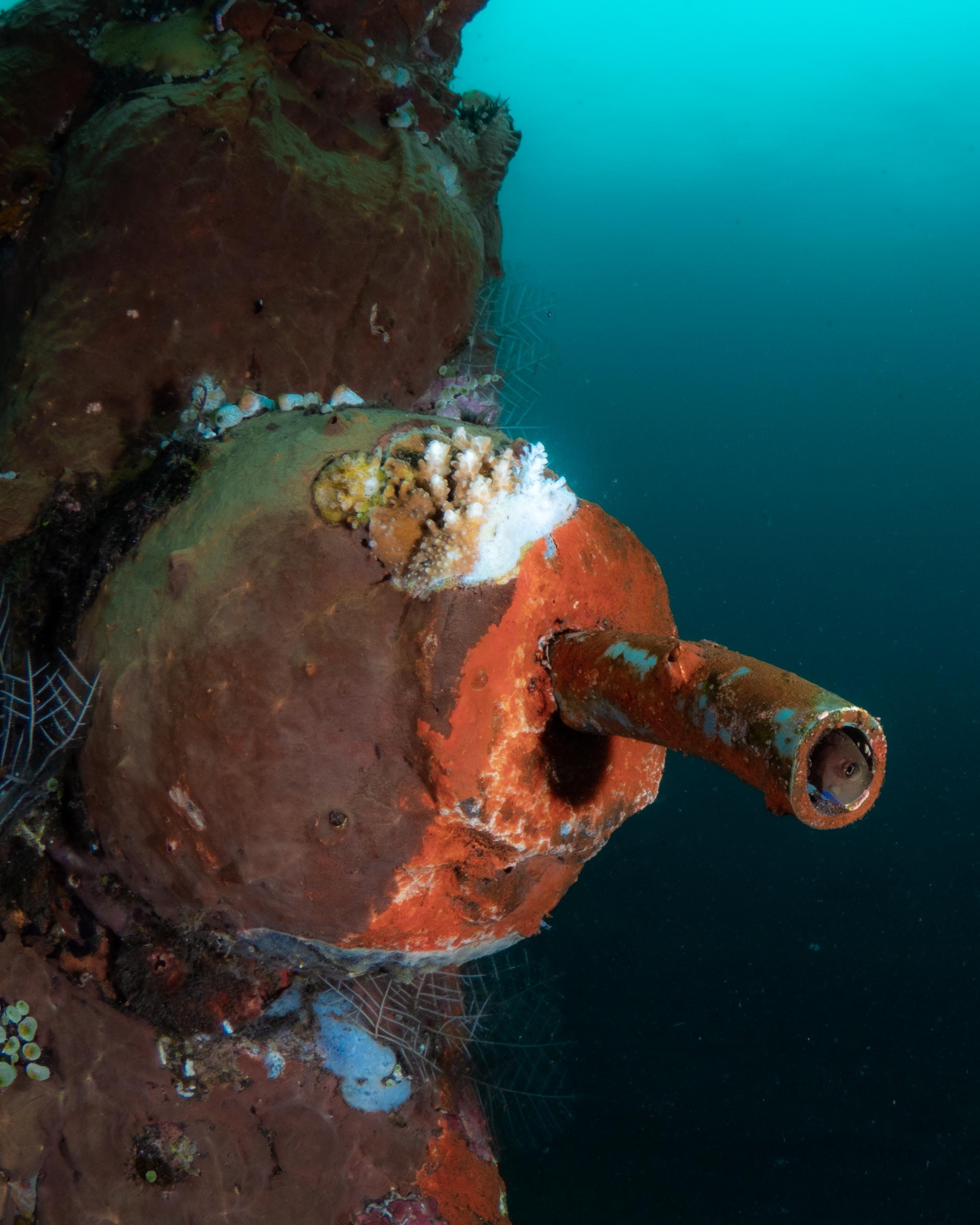
Artificial Reefs in Tulamben Bali
Bali is known as a top destination for scuba divers, but keeping dive sites pristine and healthy is not always an easy task. Tulamben met this challenge head on. In 1942 the U.S.A.T. Liberty was torpedoed by the Japanese during World War 2. The ship ran aground in an attempt to save it’s cargo and was later pushed into the ocean by a volcanic eruption. The Liberty quickly became one of the top 12 wreck dives in the world. In 2013 it was estimated that during the high season, 150 divers a day were diving on the U.S.A.T. Liberty and this much diving was having a negative impact on the wreck. The dive community in Tulamben took action and created 4 artificial reefs in an effort to encourage divers to spread out their dives and give the Liberty wreck a bit of a break. Now the reef dives around the community rival the wreck in both beauty and popularity, all while creating a valuable underwater habitat for marine life.
Reefs are vital to the marine ecosystem, providing structure, protection, and a substrate for underwater life.
In Tulamben, the USAT Liberty ship wreck is one of the most popular wreck dives in the world. A 2013 survey by the Coral Reefs Alliance projected over 44,500 tourist and scuba divers to visit Tulamben and the Liberty.
The area has 7 other dive sites. All with beautiful and unique underwater attractions. The reefs are the perfect place for a diverse community of new marine life. Sea fans, hard corals and algae give small reef fish ample locations to live and hide.
Some sites are even home to the ever-sought after Pygmy Sea Horse (Hippocampus bargibanti). Hard to find due to its fantastic camouflage and small size- less than an inch tall.
The Tulamben Dive Guide Organization has even been successful in putting in 4 artificial reefs. These stone and concrete formations are made with the hopes that marine life will overtake them and use them for a new home, boosting the marine biodiversity and biomass of the region.
These statues create homes for important reef fish like this goby living in the hose of the statues bucket.
Open sandy bottoms are often devoid of life but if there is a hard substrate nearby, those sandy patches can fill in with life. These anemones are home to pink anemone fish (Amphiprion perideraion).
The hydroids and coral on the new statues are home to countless dascyllus fish, scorpion fish and ghost pipe fish.
The artificial reefs create substrate for hydroids to live on and, in turn, the hydroids are perfect camouflage for the well hidden ghost pipe fish (Solenostomus paradoxus).
Having been underwater for over 60 years, the Liberty is also home to a pretty impressive artificial reef itself by now. Corals and algae encrust the wreck, giving it new life and purpose. And with 4 new artificial reefs nearby, the wreck gets a little bit of a reprieve from the 150 divers it used to see everyday.










